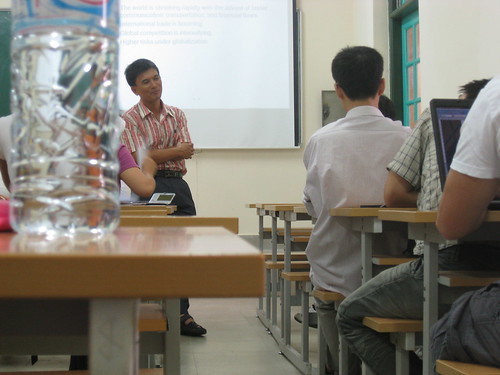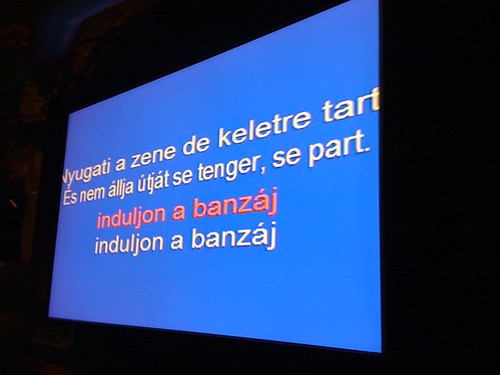A few weeks ago I participated in the APSOTW by Andrew (Northern) about cultural strategy, as outlined by Douglas Holt (who I’m a big fan of …). I had been following the APSOTW for quite a while at this point but I’ve never participated. There are many reasons for that, with the most important one being that as a non-native speaker I often found I didn’t have what it takes to ‘compete’. This time however, I thought I had to do it. I’ve been studying Holt’s academic work for a while and I always found it is brilliant in its rejection of pure technological or functional innovation and its focus on social and cultural currents. So when it came to the razors and blades category and the KoS task, I had to do this. Not so much for the competition to be honest, but for the extensive feedback by many planners and strategists whom I respect a lot.
I think the judges who took their valuable time to do this for us aspiring planners deserve a big thank you. They probably won’t hear you clapping right now but still, it is great to have some ‘virtual’ mentors like that in the industry.
The reason why I’m posting this is that I found it amazing how much different perspective and feedback can help you get to a better understanding of what you’re doing and what you’re supposed to do. It is also interesting to see certain points being mentioned repeatedly. Whereas, when you first read a point of criticism you tend to say ‘Well, yeah, they don’t get it, their problem’, you kind of change your mind when you see the same point being raised again and again. Oh, and another reason is that I wanted to have all the feedback about it in one place.
Needless to say that with every day that passes I find other holes and leeps of logic in there, as well as things I could’ve done better or completely different. Anyways: here it is.
Andrew (Northern Planner):
I love that you’ve gone right into shave culture, not just brand culture. Your pace and style begin really well. Great tension I thought – the submissive man who does what he’s told, leaving most men just getting angry and a great opportunity to embrace a much wider identity and all the possibilities that brings. Really good.
But your strategy suffers from lace of the pace and brevity in your first bit! I was really with you, but then I get less sure about ‘good men’ as a name for a target, it’s not great when you’re talking about men who embrace the best of where they’ve been and where they could go. ‘Good doesn’t encapsulate that for me!
But i LOVE the idea of the evolution of new generation, “One day we will all be like this’ if feels like a grand vision, a shared goal.
I wish you had captured the essence of what that might be, but if feels like your solution is more about embracing the old than the new. I wanted to see more possibility.
Your manifesto was beautifully written but I don’t think you’ve captured what your thinking could have been, it begins to feel like inspiring progress’ which is a great, relevant idea for a male audience, except for the fact Johnnie Walker have already done it!!
general feedback:
In most cases, I felt they were still focusing too much on trying to be different from the category rather than coming up with something that infiltrated, changed or created culture – which highlights a need for the industry as a whole to step away from focusing all their energies on celebrating what’s new and cool and get back to highlighting the values of some of the fundamentals.
Again, that sounds harsh – especially as I know a lot of people who are doing planning at a senior level who wouldn’t have come up with something as good as some of these guys – however I guess I was just disappointed overall because nothing really grabbed me by the balls and screamed “THIS IS IT”.
Gareth once said [or it might of been – god forbid – Andy] that the key is to find “unexpected relevance” and sadly I didn’t find any.
A cultural tension point is like a crossroads, where there is a mass of energy all congregated, waiting for one of the other doors to be opened and let liberation or – at the least – validation to be released. I didn’t feel the tension point the submissions highlighted really got under the skin of the audience, they were either more a CATEGORY tension point or amplifying what the media has been promoting in terms of gender attitudes and issues.
specific feedback:
I absolutely love “The Gillette-shaved man isn’t exactly a realistic, interesting or multilayered guy. And once he does ‘interesting’ things, he gets axed.” Fantastic summation that made me smile and nod at the same time. Took long enough to get to that point, but like a great joke, the punchline delivered.
Please don’t use terms like ‘he-cession’, especially when the word you are raping doesn’t really reflect the point you’re trying to make.
My problem with this submission is it feels like the Chivas Regal campaign – Be Chivalrous.
I know it’s not, I know what Thomas is saying is different, but I can’t help but feel this is more like the evolution of Gillette man than something that captures the spirit of the times.
I agree that the rebellious angle wouldn’t work long term [ala Right Wing voting tools] but the direction being presented doesn’t make my gut feel it’s something that reflects a genuine cultural tension point – something that would touch people in the same way that listening to Al Pacino’s ‘Any Given Sunday’ speech or watching Wieden’s ‘Chrysler Superbowl’ spot made them feel – even if they were about as far away from the ‘core target audience’ as you could get.
Thorough background, nicely paced – but sadly, once it got to the strategy, I felt it lost direction, energy and interest. Sorry Thomas.
Some interesting thoughts in there.
Did a nice job of building a picture of the sort of man who would reject Gillette, but I wasn’t as sure how King of Shaves were going to capture these people’s imagination. Perhaps he should have gone back to Connery and co and shown what they would have said about KOS.
The just enough is more part also seemed to come out of nowhere a bit for me. I wasn’t quite sure how this fitted with the rest of the story.
Your submission felt understated and simple, which I liked. But probably too understated: I think you could have done a better job really calling out the key ideas to help the audience along, and having a stronger point of view. Sometimes you presented a lot of information and I wasn’t sure what the key take away was supposed to be. And sometimes there were really brilliant thoughts buried in the middle of a paragraph.
You did a really good, thorough job with the category myths and orthodoxy. Nice use of various sources, quotes, pictures and videos to make it really multi-dimensional. And some great insights – like when the Gillette guys gets interesting and deviates from ‘perfect,’ he gets axed; or the link between category norms and male submission. But again these were a bit buried – could have called them out and explored them a bit more.
The cultural shift you identify around gender equality and how men are reacting is good. The ideology and source material was OK but felt a bit superficial – ‘the good things men did in the past are still valid’ is true but you could go deeper. You have some really meaty stuff buried in there which would have been great to explore more, like Susan Faludi’s point about masculinity being derived from utility in society, and not being something ornamental to display. And Tom Ford talking about contributing to the world. You could do a lot with that. What position could the brand take around that thought? A brand standing for guys who contribute to society, or who get their hands dirty, would be an interesting cultural strategy.
Similarly, the idea of “just enough is more” is a really interesting thought, would have liked to hear a bit more about where that could go.
I think you had some OK ideas for tactics. Celebrating “interesting” men is a good starting point, but a bit obvious and I think you could have gone further with it. I like the idea of a shaving brand celebrating guys with facial hair overtly, that would definitely be a departure for the category.
Calling out the industry for over-doing the technology has a lot of cultural potential, stuff like “there is no good reason for Gillette Fusion” and getting dermatologists questioning the utility of 5 blades would be great. I wasn’t sure if these were just observations though, or something you were actually suggesting – but I think it would be a great tactic to go out and pick that fight.
Overall some really good stuff, but I think you needed a bit more clarity on your thoughts, and the courage of your convictions to really take a stand and have a cultural point of view that would create impact.
Good analysis of the status quo and a history of Gillette’s advertising and “is this really the best a man can get?” is a very good question to ask. But I think you need more proof of your subsequent assertions about submission and insecurity and how that relates to shaving.
What is the cultural disruption you’re highlighting? It seems to be a redefinition of nebulous things like manliness and masculinity combined with a rejection of the technological claims. I may be wrong but you’ve not made it clear enough for me. Why do men want to be good men? Why do they want a new definition and what makes KOS the smart choice for them?
For me, you’ve created an alluring alternative but not explained why it’s alluring and to whom?
The tactics that follow are generally consistent though I wonder if the idea of a modern “gentleman” and barber shops suggest higher costs in contradiction with your complaints about Gilltete’s prices? And I still don’t get why so many of the entries featured beards – surely the anti-christ of shaving?
Finally, the manifesto lays out the position well – I just need you to anchor it explicitly to a cultural disruption
There are some nice observations about Modern Man and Modern Masculinity here and a nicely linked solution celebrating the modern gentleman (with part of being a gentleman linked to having a decent shave).
There are gems too in the manifesto, but they’re buried a bit. Perhaps a shorter, punchier manifesto might have got the point across more effectively?
It feels on the same line as the previous one but more stripped down. There’s not as much detail but the writing is good and gets to the point quickly.
I think this is my overall favourite
“good things men did in the past are still valid and relevant today and will be tomorrow” – good
“just enough is more” – good
“there are no shortcuts to being a good man” –good
Letting men have a beard – embrace the culture because it’ll have to go at some point;
Now what did I do with this? First of all, I asked for some more feedback and clarification to make sure I really got the point of the feedback. Then I took all the good and bad things (the bold stuff) out and lined it up in a document (sorted by analysis, tension point, strategy) versus my deck and made myself go through it a couple of times.
First of all, a general point seems to be that I could have written more focused, to the point and make some key observations stand out more prominently. As Jason wrote, I could have been more braver and more confident with certain ideas. That’s a core issue I think, because while I’m usually very confident with analysis and the picture of the world I draw, I lack this confidence when it comes to strategy and boiling stuff down to one conclusion (the old selection problem).
Then, there seems to be some agreement that the observation and analysis at the beginning is – in general – ok, and that I’ve hit something there. However, when it comes to what it is that I hit, there seems to be some slight disagreement already, with everyone taking out different bits and pieces as relevant, or irrelevant. This alone is very, very interesting and it’s something you can probably control better when you give a proper presentation, but even then never for 100%.
When it comes to strategy, the trouble begins. While some see an ok flow through the different points of the strategy (Gemma, Andrea – the ladies?), the general conclusion is that I haven’t linked the strategy properly and that the strategy / ideology / manifesto – the solution – isn’t clear and convincing, when compared to the background that I identified. As Rob said, I haven’t hit a real tension point with it, or at least I haven’t expressed it in this way. They still found some ‘nuggets’ in there but people seemed to wonder how it would all fit together and what the one strong idea in it is – because the ‘good’ men (or the ‘post’-modern gentlemen) apparently isn’t it.
To some it up, the category orthodoxy seems to be very good, the cultural shift in general is ok, the strong tension is missing and when it goes to strategy I lose it the pace, clarity and brevity of the first part.
Of course, I also took out what they found to be good or even very relevant parts and looked at them again. I asked myself, what was it that I suggested and found out that I really settled for the first (and pretty obvious) solution, but while mixing it with a couple of other thoughts that I thought were relevant, but that I couldn’t express in a proper way. This is true both for the shift and for the solution.
In effect, I identified two shifts. One is about the rejection of modernities’ promises. It’s speed, pressure, globalization and technology that lead to a lot of everyday madness and that keep a lot of men from doing stuff they might actually like to do. All the stuff that led among other things to the outdoor boom, the search for authenticity, micro-brewery advertising and ‘real’ stuff and purpose in life. This is where the thought of ‘submission’ comes from, because the category celebrates a picture of men that a lot of men actually despise. As Andrea and other APSOTW strategies pointed out and I failed to: most men don’t actually want to shave, they hate it. They just have to do it because it is often a requirement of the business world and they somehow think women want them to be clean- or full-body-shaved (which I doubt, having a beard myself 😉 ).
The other shift is about the rejection of the strict image of a male, masculine, manly identity itself and the media portrayal of men a stupid and useless guys. Identity isn’t the one monolithic thing anymore that you have to stick too all the time. Men today experiment with all kinds of things, from – well – beards to sex toys to cooking to fashion to other things. This is where the thought of the journey, the experimentation, experience, interestingness and the ‘good men’ probably came from. This isn’t about a role to play and fit in, but a life to live and fill with purpose. And it subsequently led to the idea of the dawn of a new generation that was somehow buried in there and that I almost forgot if it wasn’t for Andrew remembering it (the magazines on slide 28 etc.).
All of this culminated in a thought of ‘just enough’. This isn’t about an overly expressed masculinity, but about celebrating men with an authentic purpose in their life who want a fucking break from all of this ‘role playing madness’, from the ‘progress’ that hasn’t helped anybody (real wages etc.). Men who want to be ‘good’ (and have no idea what that means anymore), find a partner, live and appreciate a decent and real life. Enough – I thought – was true for so many things in their life – not more technology, not more media bashing, not more blades, not more … And ‘Just Enough’ I thought was a good way of framing the desirable stuff (experience, progression, change, traditional things that are regarded good and part of male identity, interestingness, technology, blades) in a good way. To solve this tension between dreams of ‘Damn, I’d love to do and be like this!’ – which can be expressed in a million (and e.g. not always heterosexual) ways – and the ‘But society wants me to be like that’, which puts many men under pressure. Does that make sense? I don’t know. In the submission I haven’t framed and expressed it in a way that would people go ‘Fuck me, that’s it!’ – I still haven’t, I guess.
So where does it all go from now?
Andrew didn’t announce a winner and as I said, I was in this more for the feedback than the potential prize. The next task – the tiebreaker round – is to distill a creative brief out of the work, with the feedback in mind. A brief that has creatives running to fill their moleskins with awe-inspiring stuff. As I have to devote most of the time this week for university and ‘real work’ I’m not sure if I’ll be actually able to do this the proper way, but I’ve already learned loads and I can only recommend everybody to take part in the next round, should there be one.






